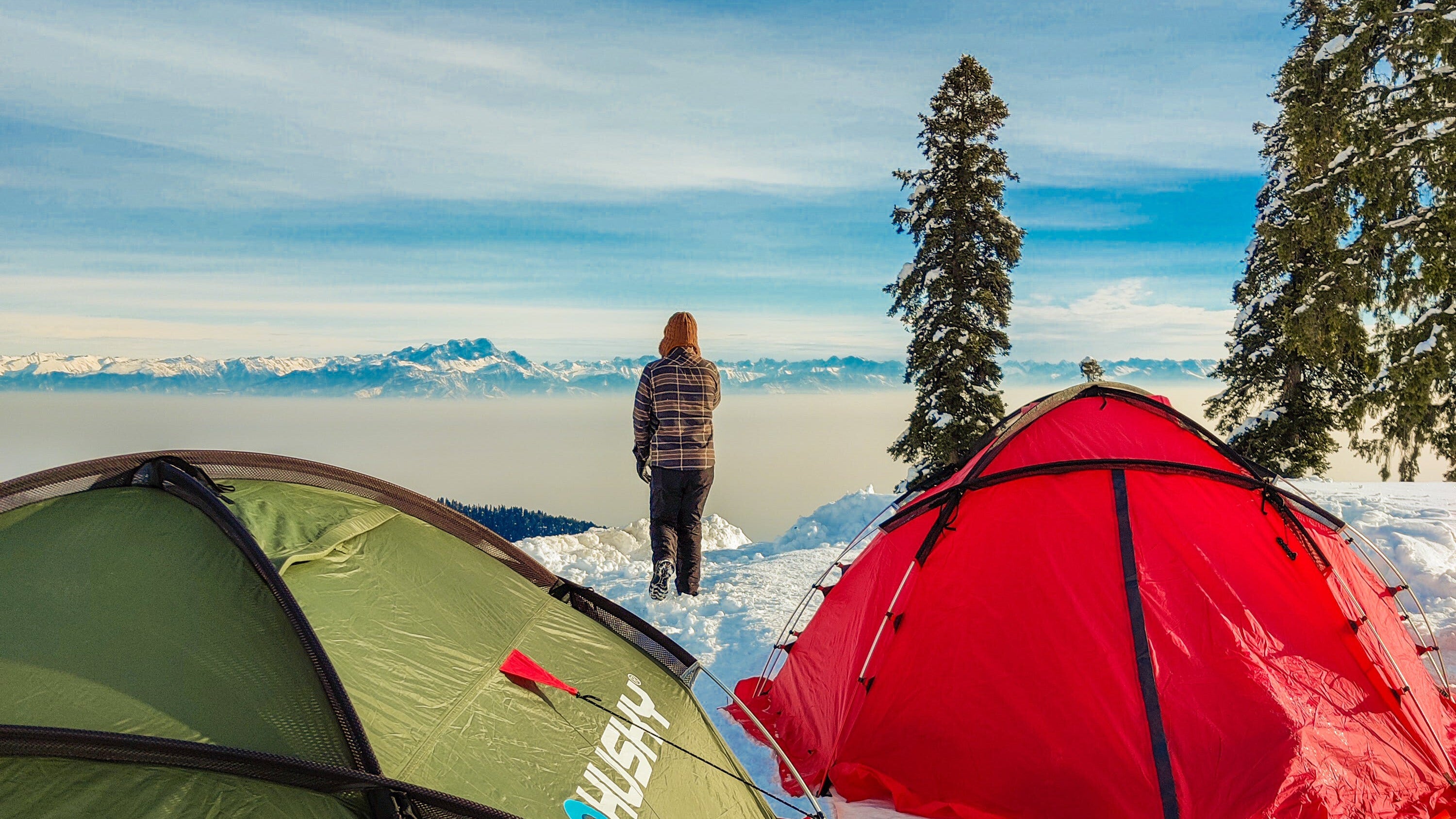Camping in winter is always welcome if you're seeking a tranquility moment. Footsteps on the snow, the calmness of the environment, the incredible views, and the comfort of having your RRAT's with you as you walk around the campground or prepare a snack are more than enough reasons to go winter camping.
In this blog, we'll give you some tips to make your winter camping experience much more enjoyable. Keep reading, and let RRAT's Outdoor advise you!
Forecasting: Your Greatest Ally
Getting lost in winter is much easier than in summer; snow-covered paths often make orientation challenging. Therefore, planning your route and activities for your camping trip will be crucial.
First and foremost, you need to decide whether you're going to camp on your own or in a designated campground. If you prefer the former option, keep in mind that not all places allow camping, so you'll need to search for legal sites where you can camp freely. Additionally, if you're going to snowy areas, be aware of avalanche-prone zones and avoid camping in them.
On the other hand, being familiar with the routes and trails around your camping area will be very useful for always knowing your location. You can use Google Maps or other specialized sports apps like Strava or Wikiloc. However, don't forget to check the emergency services in the area and inform your family and friends of all essential information to locate you if necessary.
A good tent for a better experience
For this occasion, having a four-season tent is the best option as they are specially designed for winter use. These tents are made with heavier and less breathable materials to increase resistance to cold. They can withstand strong winds and prevent snow from accumulating on the tent's roof.
While these tents provide significant protection from the cold, it may not be sufficient. In addition to getting an appropriate tent, you should also consider your sleeping bag. Factors to consider when choosing the best sleeping bag include weight, size, material, etc.
The weight of the sleeping bag will depend on whether you'll be carrying it while hiking or if you'll be driving to the camping site. If you're carrying it in your backpack while hiking, opt for a lightweight option. A down sleeping bag would be your best choice as they withstand sub-zero temperatures well. However, if weight is less of a concern, you can opt for a synthetic sleeping bag, which performs better in damp conditions.
Before making a purchase, we recommend seeking advice from an expert to ensure you meet your needs 100%.
Hydration and nutrition on your snow adventure
Walking in the snow consumes much more energy and requires more effort than usual. Therefore, staying hydrated at all times is essential, especially when at higher altitudes. We recommend to hydrate regularly, every 20 or 40 minutes, depending on the intensity of the hike. However, avoid drinking cold water or isotonic drinks; instead, opt for warm or hot beverages like tea, coffee, broth, etc.
When it comes to food, it's best to prepare hearty meals using a small camping stove. For hikes, pack several energy bars, nuts, chocolate for an extra energy boost, and some fruits. Additionally, it's advisable to carry extra food in case of emergencies.
The best clothing to avoid getting cold
To stay warm during the day, you'll need sturdy, waterproof, and warm clothing. However, it's also essential to stay dry to avoid catching a cold.
Dressing in layers is the best option to stay warm in winter. The first layer regulates temperature and keeps the skin surface dry. This includes thermal underwear, pants, and socks.
The second layer is responsible for retaining heat and preventing body cooling. The materials of garments in this layer should be lightweight and breathable. Additionally, we recommend wearing another pair of thicker socks over the first ones.
Finally, we have the third and final layer. Everything related to protecting oneself from moisture, wind, etc., is included in this layer. Therefore, you should wear a good waterproof jacket and pants. Gloves and hats are also included in this layer.
Once you're dressed in all the layers, it's time to put on the appropriate footwear. For mountain hikes, we recommend good boots with a sturdy, slip-resistant sole that provides excellent grip and cushioning. Additionally, they should be waterproof to keep your feet dry.
If you also want to be comfortable in the tent and don't want to wear boots all day, we recommend using RRAT’s Y-Gravel or RRAT’s Y-Minimal mountain sandals. The advantage of these sandals is that they won't take up much space, and they'll allow you to relax your feet while cooking dinner or simply lounging in the tent. Just remember to bring a pair of Vibram socks to keep your feet warm!
So, have you got the urge to go winter camping? We hope our tips for experiencing the best adventure are helpful and that you feel inspired to embark on your own journey!


